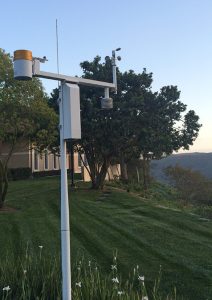
ASCE 7-10 Design Wind Speed
Question 1: I understand that I can find out a wind speed for the United States, U.S. Virgin Islands, Guam and American Samoa at http://www.atcouncil.org/windspeed/index.php. Is there a similar website to determine wind speeds at international locations such as Haiti?
Answer 1: We are not aware of one. Please note that when obtaining wind speeds, it is important to know what wind speed you are being given. The design wind speed maps in the 2012 IBC/ASCE 7-10 produce strength-level design wind forces. The design wind speed maps in the 2009 IBC/ASCE 7-05 produce service-level design wind forces.The design wind speeds are, therefore, higher in the 2012 IBC/ASCE 7-10 than in the 2009 IBC/ASCE 7-05. If you are designing in Haiti, for instance, and there is an established design wind speed, it is very likely that it is a wind speed that will result in service level design wind forces.
Also, very importantly, ASCE 7, starting with its 1995 edition, and all codes and standards based on those editions (which include all editions of the IBC) have given us 3-second gust speed at 30 ft or 10 m above ground in Exposure Category C (flat open country). 3-second gust speed means wind speed averaged over 3 seconds. In general, the shorter the averaging time, the higher the average wind speed. While 10 m above ground in the equivalent of Exposure Category C seldom changes, various averaging times are used in countries around the world. If a reported wind speed is based on an averaging time other than 3 seconds, an adjustment needs to be made using ASCE 7-10 Figure C26.5-1 or equivalent. Please note that the figure is applicable only to non-hurricane wind speeds.
Question 2: If I’m given a wind speed that will result in service-level design wind forces, how can I translate it into a wind speed that will result in a strength-level design wind force that will be compatible with the 2012 IBC/ASCE 7-10?
Answer 2:The strength-level design wind forces of the 2012 IBC/ASCE 7-10 are 1.6 times the service-level design wind forces of the 2009 IBC/ASCE 7-05. Since force or pressure is proportional to the square of the velocity, V of ASCE 7-10 is equal to the square root of 1.6 times V of ASCE 7-05. So you would multiply the ASCE 7-05 wind speed by the square root of 1.6, or 1.265, to translate it into a 2012 IBC/ASCE 7-10 wind speed.
Strictly speaking, the above answer is directly applicable only to a Risk Category (RC) II structure. For RC III and IV structures, V of ASCE 7-10 is V of ASCE 7-05, multiplied by the square root of 1.6, further multiplied by the square root of 1.15, the importance factor used in ASCE 7-05 for the design of RC (then Occupancy Category or OC) III and IV structures. Similarly, for RC I structures, V of ASCE 7-10 is V of ASCE 7-05, multiplied by the square root of 1.6, further multiplied by the square root of 0.87, the importance factor used in ASCE 7-05 for the design of RC (then OC) I structures in non-hurricane-prone regions.
